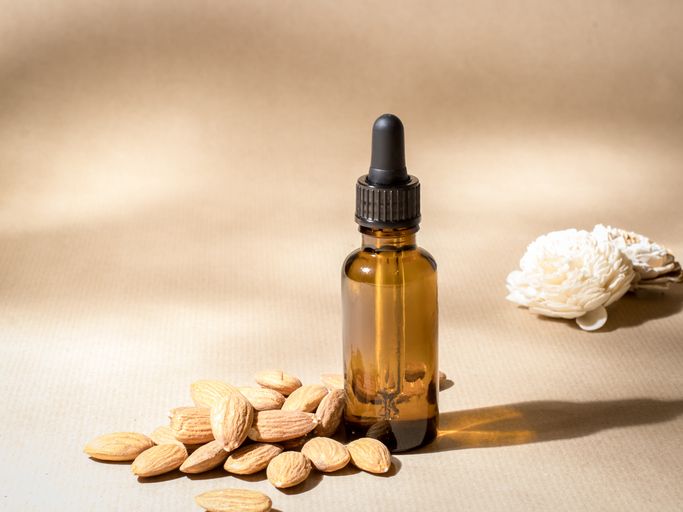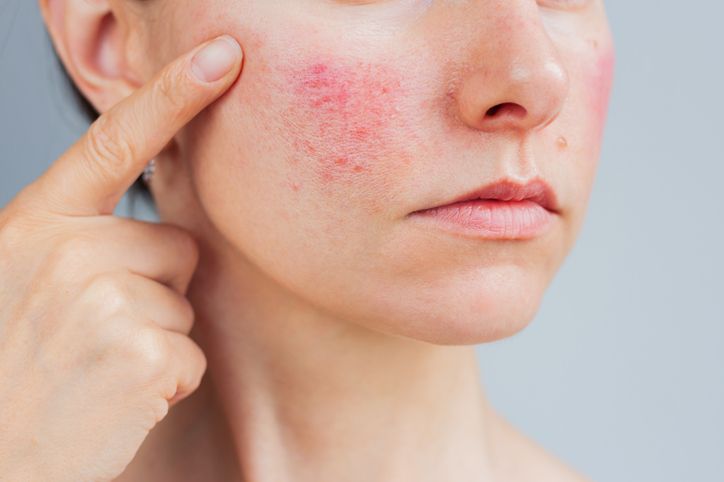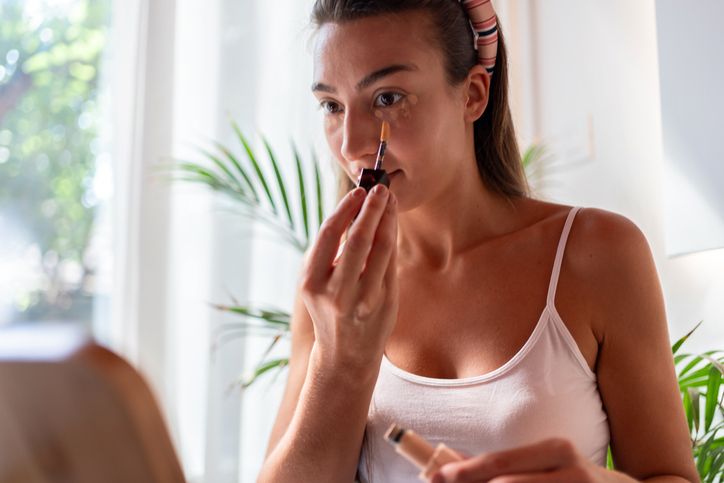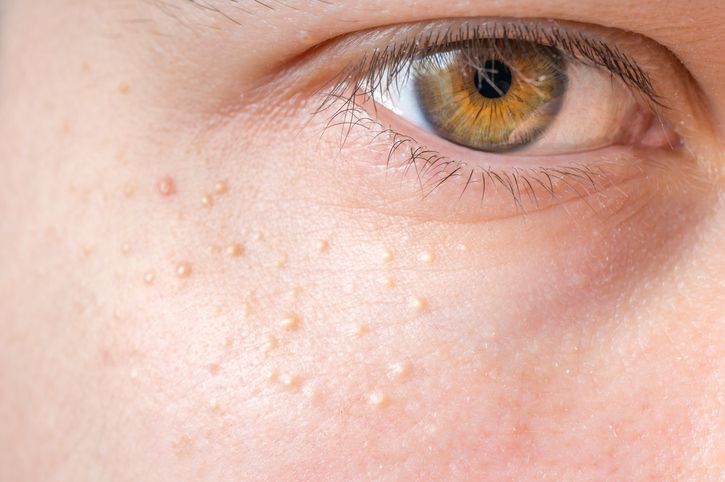- Home
- Trend
- Weight Loss Strategies
- Acne Tips
- Hair Health Information
- Blemish Removal Tips
- Acne Scar Removal Tips
- Muscle Building Techniques
- Intimate Care Tips
- Postpartum Intimate Care
- Eye Bags Wiki
- Tips for Face Slimming
- Secret of Permanent Hair Removal
- Breast Enlargement Tips
- Cure to Snoring
- Marionette Lines
- Skin-Tightening Secrets
Crown thinning is a common "silent struggle" for many women. As the parting line on the crown widens and the scalp gradually becomes more exposed, it can be a source of frustration. Crown thinning is a frequent occurrence in female hair loss. As women lose hair to a certain degree, it may evolve into thinning hair, finer strands, poor hair quality, and even bald spots! Women with crown thinning often find their hairstyle choices limited. To effectively treat thinning and promote hair growth, one can start by improving daily habits, dietary practices, and hair growth treatments. If you no longer want to be bothered by the appearance of crown thinning, make sure to bookmark the following hair-boosting tips to accelerate hair growth!
What is Crown Thinning?

Crown thinning refers to the gradual hair loss at the top of the head, significantly reducing hair volume. When you notice your hair no longer covers your scalp and can visibly see exposed scalp, that's a clear sign of crown thinning.
The main reason women experience crown thinning is increased hair loss. Once hair follicles reach a certain length and time, they transition from the growth phase into the regressive phase, causing the hair to shed and enter the resting phase, where the follicles stop growing entirely. After a resting period, the follicles enter the growth phase again, producing healthy strands of hair. Crown thinning can result from multiple factors, such as weakened follicles that can't hold onto hair roots, or weakened follicle health that prevents them from entering the growth phase, and more. Therefore, women with crown thinning should identify the underlying cause and seek appropriate treatment.
3 Early Signs of Crown Thinning You Should Know!
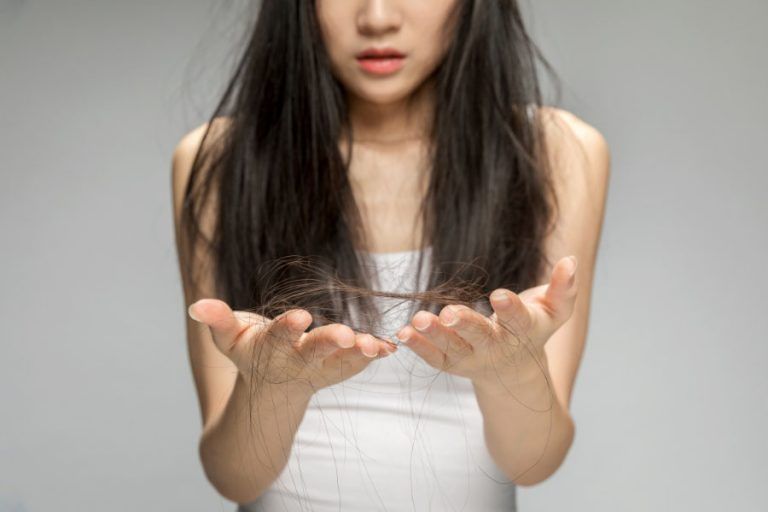
Many women are concerned about hair thinning or crown thinning. Like other physical issues, early detection and treatment can significantly reduce the risk of worsening. So, it's time to check your scalp and hair health!
Early Sign 1: Itchy Scalp
Itchy scalp is one of the common early signs of hair loss, and it also applies to crown thinning. Typically, scalp itching is caused by dandruff, excessive oil secretion, or scalp bacterial growth. All these causes can affect follicle health, weakening hair, so if women experience persistent scalp itching, it’s something to pay attention to!
Early Sign 2: Increased Hair Loss
Many hair loss issues, such as male-pattern baldness, begin at the crown. Therefore, if a woman loses a lot of hair daily, it’s important to check if it might lead to crown thinning. Under normal metabolic and hair growth cycles for adults, losing 50 to 100 hairs daily is considered normal. If it exceeds this number, it indicates hair loss problems!
Early Sign 3: Softer Hair Texture
The texture and thickness of hair don’t typically change suddenly. If women notice their hair becoming thinner and softer, it’s a sign that crown thinning may have begun. Healthy hair roots are strong enough to hold onto the follicles and prevent hair loss. However, if hair becomes thinner, or starts to change color, become oily, etc., it indicates weakness, and it’s important to assess whether crown thinning is developing.
免費體驗
F8 Hair Regrowth Treatment
1 Minute Self-Registration
Date should not be before minimal date
Causes of Crown Thinning: Stress Can Lead to Hair Loss!
Crown thinning is a precursor to hair loss. If not properly managed, it can worsen into more severe hair loss. In Hong Kong, the high stress from work and life, combined with habits and genetics, leads many women to suffer from hair loss problems, resulting in crown thinning, reduced hair volume, or even baldness, receding hairlines, or the development of a "Mediterranean" hairline.
Cause 1: Genetics
One of the primary causes of crown thinning is genetics. If parents have hair loss issues, the "hair loss gene" is highly likely to be passed on to their children. The most common areas affected by this gene are the crown and forehead. Therefore, hereditary hair loss often starts at the crown and forehead, leading to crown thinning.
Cause 2: Postpartum Hair Loss
Postpartum hair loss is one of the common reasons for hair loss in women. Crown thinning, receding hairlines, and reduced hair volume are typical symptoms of postpartum hair loss. During pregnancy, hormonal changes prolong the hair growth cycle, and after childbirth, as hormones return to normal, combined with blood loss during delivery, increased stress, and reduced energy, the growth nutrients for hair diminish, making postpartum hair loss quite common.
Cause 3: Stress
Crown thinning is not uncommon in urbanites under stress. Many working women also have to manage family responsibilities, leading to increased psychological and physiological stress. When emotional pressure is too high, scalp muscles tend to tighten excessively, causing blood circulation to the scalp and hair to be obstructed, which can lead to hair loss symptoms.
Cause 4: Scalp Diseases
In Hong Kong’s humid and warm climate, combined with individual scalp types, many women suffer from scalp diseases, which can contribute to crown thinning. Scalp issues like excessive oil, seborrheic dermatitis, folliculitis, dandruff, etc., commonly occur at the crown, so even minor issues like oily scalp or dandruff should not be ignored.
Hair Loss Types Leading to Crown Thinning
There are various types of hair loss, some of which are common among women and can lead to crown thinning. Understanding the following types of hair loss can help women improve crown thinning and prevent the risk of baldness.
Hair Loss Type 1: Male Pattern Baldness
Male pattern baldness is not exclusive to men, and crown thinning is a hallmark symptom of this condition. It occurs when the male hormone dihydrotestosterone (DHT), formed by the combination of testosterone and 5-alpha reductase, attacks hair follicles prone to hair loss. This affects the hair follicles at the crown and forehead, leading to common male pattern baldness symptoms such as receding hairlines, a M-shaped hairline, and bald patches.
Hair Loss Type 2: Seborrheic Alopecia
Seborrheic alopecia leads to crown thinning because excessive sebum production clogs hair follicles, preventing them from absorbing the nutrients needed for hair growth. The typical symptoms include hair loss starting from the central crown, gradually expanding until only hair remains on the sides, forming a pattern similar to male pattern baldness. Additionally, the exposed scalp will appear shiny and oily.
Hair Loss Type 3: Telogen Effluvium
Crown thinning can also be caused by telogen effluvium. Hair growth occurs in cycles, including the anagen (growth), catagen (regression), and telogen (resting) phases. After the telogen phase, hair should normally return to the anagen phase, regrowing. However, if the hair follicles become weak or atrophy due to poor health, stress, or other factors, they may fail to return to the anagen phase, resulting in excessive hair shedding.
Effects of Crown Thinning: The Risk of Baldness!
Crown thinning not only leads to the frustration of hair loss but can also make a person appear older than their actual age. It can have a significant impact on appearance and daily life.
Effect 1: Impact on Appearance
Thick hair is often seen as a sign of youth, and many older individuals experience hair loss. If crown thinning occurs, it can be associated with the hair loss seen in older adults, making even women in their twenties appear to be in their thirties or even forties.
Effect 2: Impact on Self-Confidence
Many individuals with hair loss experience a drop in self-confidence, especially when crown thinning progresses to male pattern baldness or baldness. This can be particularly challenging for women, as hair loss may lead to unwanted attention or judgment, diminishing their confidence.
Effect 3: Impact on Social Life
Crown thinning can affect social interactions, whether due to discrimination or a drop in self-esteem. Personal appearance often influences first impressions in the workplace, relationships, and social settings, and individuals with significant hair loss may experience social obstacles.
Effect 4: Limited Hairstyle Options
Women with crown thinning often have less hair volume, and because the scalp isn't fully covered, their hairstyle options are limited. They are typically restricted to styles that visually add volume, but they can't achieve the effect of thick, full hair.
Effect 5: Risk of Baldness
The ultimate effect of crown thinning is baldness. When hair loss reaches a point where the scalp is exposed, the hair cannot fully cover the scalp. If left untreated, the hair loss can continue, leading to complete baldness at the crown.
免費體驗
F8 Hair Regrowth Treatment
1 Minute Self-Registration
Date should not be before minimal date
How to Prevent Crown Thinning?
Many people think that hair loss is unavoidable, but improving certain lifestyle habits can help prevent crown thinning, especially for busy urbanites. If work stress is already high, neglecting proper rest can severely affect the health of hair follicles.
Prevention 1: Regular Exercise
Maintaining healthy hair requires healthy hair follicles. Women with crown thinning should develop an exercise routine to improve metabolism, eliminate toxins, and restore a healthy hair growth cycle. Aim for at least three high-intensity workouts of 30 minutes each per week, such as running, swimming, or dancing.
Prevention 2: Reduce Damage to the Scalp
Many women enjoy chemically treating their hair, such as perming or dyeing, but those with crown thinning should learn to protect their scalp and hair. Frequent chemical treatments can irritate the scalp and damage hair follicles, weakening the hair. Reducing the frequency of these treatments can significantly help prevent crown thinning.
Prevention 3: Eat Hair-Boosting Foods
To achieve thick, full hair and reduce the risk of crown thinning, it's important to consume a variety of nutrients such as protein, iron, zinc, carbohydrates, and fatty acids. Many women reduce fat intake when dieting, but fats and oils are essential for healthy, strong hair. Healthy fat sources like avocados, salmon, nuts, and yogurt can help nourish hair without causing excessive weight gain.
Prevention 4: Reduce Sugary Foods
Eating too much sugar not only causes fat accumulation but also increases the risk of crown thinning. High sugar intake can trigger insulin production, weakening hair follicles and leading to hair shedding. It also stimulates sebum production, which clogs hair follicles.
Haircut Options for Thinning Hair on the Crown
As many women know, the right hairstyle can make you look younger. However, for women with thinning hair on the crown, their hairstyle options are already limited. Therefore, it’s essential to be extra careful when designing a hairstyle to conceal thinning hair and scalp exposure.
Thinning Hair Hairstyle 1: Avoid a Center Part
If you want to improve the appearance of thinning hair, the first rule is to avoid a center part. While a center part can make the face appear smaller and give a slimming effect, for those with thinning hair, this style accentuates the width of the part and the thinning on the crown, making the scalp look more exposed and the problem more noticeable.
Thinning Hair Hairstyle 2: Dark Hair Color
A dark hair color can visually make the hair appear thicker, which is very friendly for women with thinning hair. Typically, thick and dense hair is jet black, and shades close to black or dark colors can make the hair look fuller, improving the appearance of sparse hair. However, those with thinning hair should avoid light hair colors, as lighter shades make hair appear lighter, which can accentuate the thinness if the hair volume is already low.
Thinning Hair Hairstyle 3: Short or Curly Hair
Additionally, women with thinning hair should avoid long straight hair or thin, flat hairstyles. The visual focus of long straight hair is often on the ends, and the weight of the hair pulls on the roots, which can further damage the follicles on the crown, worsening thinning. Short hair or curly hairstyles are recommended, as they can add volume and cover exposed scalp areas, making thinning hair less noticeable.
Thinning Hair Hairstyle 4: Pair with Hats or Hair Accessories
Aside from choosing a suitable hairstyle, women can also consider using hats or hair accessories to improve the appearance of thinning hair. Wearing hats is also a trend, and no matter the season, there are various types of hats to choose from, such as sun hats, berets, baseball caps, etc. Women with thinning hair on the crown can also use different hair accessories to shift the visual focus, diverting attention away from thinning spots on the scalp.
How Traditional Chinese Medicine Views Thinning Hair: 3 Recommended Dietary Remedies
In addition to Western medicine, many women now turn to traditional Chinese medicine (TCM) to improve thinning hair on the crown. TCM believes that "hair is the surplus of blood," meaning hair growth is closely linked to the body's circulation and nourishment of the blood. When the body's vital organs are lacking in blood and energy, nutrients for hair growth cannot reach the scalp, causing hair follicles to weaken and shrink, leading to hair loss, including thinning on the crown.
TCM also associates hair loss with the liver and kidneys. To improve thinning hair on the crown, it’s crucial to first strengthen the liver and kidneys. Liver and kidney deficiency, along with damp heat in the spleen and stomach, is a common issue for many urban dwellers due to stress, poor diet, and other factors. This can affect hair growth, making it lackluster and prone to breakage, and can increase oil production on the scalp, preventing follicles from absorbing nutrients.
To improve thinning hair, TCM recommends dietary solutions. Some easy-to-make remedies have benefits for nourishing the liver and kidneys. Here are three dietary remedies that may help improve thinning hair:
Dietary Remedy 1: Walnut Paste
Ingredients:
• 100g of walnuts
• 500ml of water
• Rock sugar (to taste)
Method: Roast the walnuts until fragrant, then blend them with half of the water. Once blended, add the rest of the water and cook until the mixture thickens. Add rock sugar to taste.
Benefits: Walnuts help nourish the kidneys, hydrate the lungs, and promote healthy hair, improving the thickness and shine of hair.
Dietary Remedy 2: Barley Water
Ingredients:
• 50g of raw barley
• 20g of cooked barley
• 4 dried jujubes
• 1500ml of water
Method: Wash the raw and cooked barley, then put all ingredients into a pot. Boil on high heat and then simmer on medium-low heat for 45 minutes. Let it cool before drinking.
Benefits: Barley helps strengthen the spleen and resolve dampness, balancing the cooling effects of raw barley with the warming effects of cooked barley. Drinking this can help expel excess dampness from the body and enhance digestive functions, contributing to healthy hair.
Dietary Remedy 3: Goji Berry and Chrysanthemum Honey Tea
Ingredients:
• 10g of goji berries
• 3g of chrysanthemum
• 500ml of hot water
• Honey (to taste)
Method: Rinse the goji berries and chrysanthemum, then place them in a cup. Add hot water and steep for 10 minutes. After cooling slightly, add honey to taste.
Benefits: Goji berries help replenish kidney essence, while chrysanthemum clears the liver and improves eyesight. Regular consumption can support liver and kidney health, promoting hair growth and preventing hair loss.
免費體驗
F8 Hair Regrowth Treatment
1 Minute Self-Registration
Date should not be before minimal date
Treatments for Thinning Hair on the Crown
Early prevention and treatment of hair loss are crucial. Once the hair follicles are completely damaged, most treatments will be ineffective. Therefore, if you notice thinning hair on the crown, it’s essential to seek treatment immediately. There are several treatments available for hair loss, but not all of them are suitable for everyone. If you experience thinning hair, it’s advisable to consult a professional doctor for a scalp and follicle examination to determine the cause of hair loss.
Treatment 1: Medical Low-Level Laser Therapy (LLLT)
Many people think of hair loss treatments like hair regrowth lotions or hair transplants, but these solutions are not always effective for thinning hair. Additionally, taking medications or undergoing surgery can put strain on the body. If you want a non-invasive way to address thinning hair, low-level laser therapy (LLLT) is an ideal choice.
LLLT uses soft laser technology that penetrates the scalp and stimulates hair follicles, even those that have shrunk or are in the resting phase, to reactivate the growth cycle. This method increases oxygen levels in the scalp, improves blood circulation, and creates a better environment for hair growth.
There are treatments available that offer LLLT for hair regrowth, such as the Perfect Medical F8 hair treatment, which uses 650nm LLLT technology to activate hair follicles and is combined with powerful hair-nourishing factors to promote cell renewal. This treatment is especially suitable for thinning hair on the crown, male pattern baldness, and other common hair loss issues.
To effectively address hair loss, it’s important to take advantage of the "golden period" for hair restoration and try out the Perfect Medical F8 hair treatment, which offers professional scalp assessments and a free trial of the full treatment. Don’t wait too long to seek treatment for hair loss!
Treatment 2: Anti-Hair Loss Products
There are many anti-hair loss products available on the market, with some containing "hair thickening fibers" or "hair growth agents." These products are popular among people with thinning hair, as some claim to help regrow hair and improve the condition. However, these hair thickening fibers typically provide only a temporary visual increase in hair volume, rather than permanent hair growth.
Regarding hair growth agents, there is not yet enough medical evidence to confirm their effectiveness in improving thinning hair. Compared to medical low-level laser therapy, LLLT has been proven to stimulate hair growth and provide long-term results.
Treatment 3: Hair Growth Medications
If you have thinning hair, you might consider hair growth products such as Minoxidil or oral Finasteride. These medications have been shown to improve hair growth in clinical studies but can come with side effects, including hair shedding after discontinuation or scalp sensitivity.
However, with low-level laser therapy, you don’t need to worry about the above side effects. The soft laser penetrates the follicles, revitalizing dormant ones and improving blood circulation, so after completing a laser treatment, you won’t need to worry about thinning hair returning.
Treatment 4: Hair Transplants
Hair transplants have long been seen as the ultimate solution for hair loss, especially for those with thinning hair on the crown, male pattern baldness, or receding hairlines. A hair transplant involves transplanting healthy hair follicles to the thinning areas using techniques like FUT or FUE. These transplanted follicles can "take root" and grow healthy hair.
Although hair transplants are highly effective for severe hair loss, they leave scars on the scalp, require anesthesia during the procedure, and have a longer recovery time. You can expect visible hair growth results in about a year.
In contrast, low-level laser therapy shows visible results in just three months and is a non-invasive, painless procedure that does not require surgery or injections, with minimal scalp irritation.
Try it Today: Perfect Medical F8 Hair Regrowth Treatment免費體驗
F8 Hair Regrowth Treatment
1 Minute Self-Registration
Date should not be before minimal date
FAQ

How can I tell if I have thinning hair on the crown?
Thinning hair on the crown refers to the gradual loss of hair in that area, leading to a significant decrease in hair volume. If you notice that your hair no longer covers the scalp and the scalp is visible to the naked eye, it’s likely thinning. Additionally, persistent scalp itching, softer hair texture, and increased hair shedding may be early signs of thinning.
Will thinning hair on the crown progress to baldness?
Thinning hair on the crown can eventually lead to baldness. If the hair on the crown continues to fall out and cannot cover the scalp, it will expose the scalp. If left untreated, this can progress to complete baldness in that area.
Can hair growth agents make my hair thicker?
Some anti-hair loss products contain hair thickening fibers or hair growth agents, which claim to improve hair thickness and promote hair regrowth. However, these products generally only provide a temporary increase in volume and do not offer long-term growth results. There is also insufficient medical evidence to suggest that hair growth agents can improve thinning hair. Compared to certified laser treatments, these products are less effective in the long run.
What dietary remedies can improve thinning hair on the crown?
To improve thinning hair, consider drinking Goji Berry and Chrysanthemum Honey Tea, which can help nourish the liver and kidneys, promoting hair growth and preventing hair loss. You can also try walnut paste, which improves lung health and hair thickness, or barley water, which enhances spleen health and supports healthy hair growth.
What hairstyles are suitable for women with thinning hair on the crown?
Women with thinning hair should avoid long, straight hairstyles that focus on the hair ends. The weight of long hair can strain the roots, making thinning hair worse. Short or curly hairstyles are best as they can visually add volume and hide exposed scalp areas, making thinning hair less noticeable.






